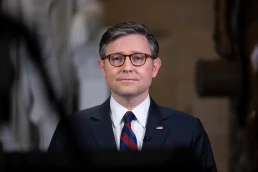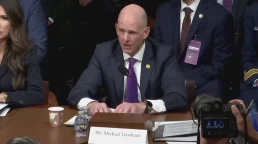The statistics show an 80% margin of support for Putin and the invasion of Ukraine but a list experiment suggests a significant number of Russians hide their true views.
By Philipp Chapkovski, LSE
Survey evidence indicates a majority of Russian citizens support their country’s military action in Ukraine. But does this give an accurate picture of public opinion? Using an innovative list experiment, Philipp ChapkovskiandMax Schaub demonstrate that a significant percentage of Russian citizens are likely to be hiding their true views about the conflict.
In war, the saying goes, truth is often the first casualty. So when several polls showed that up to 80 percent of Russians supported the war against Ukraine, many doubted these figures, including on this blog. Is it possible that support for the brutal invasion is really so high – or is it just that individuals are afraid to share their true opinions? While it is well known that fear of repression can lead to preference falsification, i.e. people publicly supporting positions they privately don’t share, showing that this mechanism is at work is not easy. After all, people are unlikely to say whether they are hiding their true preferences or not if they are hesitant to reveal these preferences in the first place

Why is it important to know the true level of public support for the invasion? One aim of the Western sanctions is to weaken Vladimir Putin’s regime, and at least some observers hope that this will ultimately end Putin’s reign. And while authoritarian regimes are usually undermined by actors from within the elite, popular support for regime change also matters. Without popular support, a coup is doomed, often with fatal consequences for its leaders. The level of popular support for, or disapproval of the war, therefore, is an important determinant for how realistic the hope for regime change is.
A list experiment
As a way to find out if people reported their attitudes towards the war truthfully, we conducted an online survey and a list experiment. In the list experiment, respondents were asked whether they personally supported none, one, two, three, or four of the following things (shown in a random order): 1) monetary monthly transfers for poor Russian families; 2) legalisation of same-sex marriage in Russia; 3) state measures to prevent abortion; and 4) the actions of the Russian armed forces in Ukraine.
Respondents were explicitly asked to only indicate how many of the items they supported, not which one(s). This means that no one will ever know if a given respondent supports the war (item 4). The list experiment therefore solves the problem of preference falsification – it allows respondents to tell the truth. This method has been used to reveal true levels of racism in the United States or to quantify the occurrence of sexual violence during war, to name but two examples.
Recent Posts
White House Refuses To Rule Out Summary Executions Of People On Its Secret Domestic Terrorist List
December 15, 2025
Take Action Now The Trump administration ignored questions about whether it would order the killings of those on its NSPM-7 list — even while…
Koch Network Fuels Republican Push To Kill ACA Subsidies
December 15, 2025
Take Action Now As millions face higher premiums, Koch‑funded groups are pressuring Republicans to oppose Obamacare subsidy extensions.By Donald…
We’re Making ‘Tax the Rich’ More Than a Slogan
December 14, 2025
Take Action Now “Workers Over Billionaires” was the slogan on Labor Day. It should be the slogan every day.By Max Page, Labor Notes Taxing the…
‘Total Amateur Hour’: FBI Official Says Antifa Is #1 Threat in US—But Can’t Say Where, Who, or What It Is
December 13, 2025
Take Action Now “Just a complete admission here that the entire ‘antifa’ threat narrative is totally manufactured by this administration,” said one…




